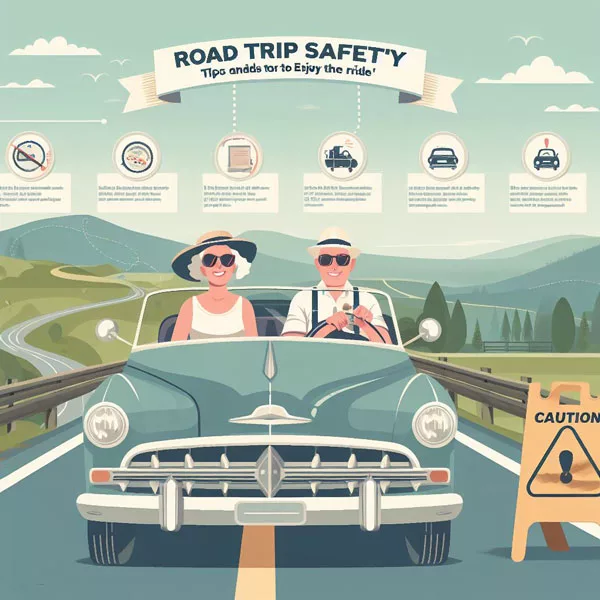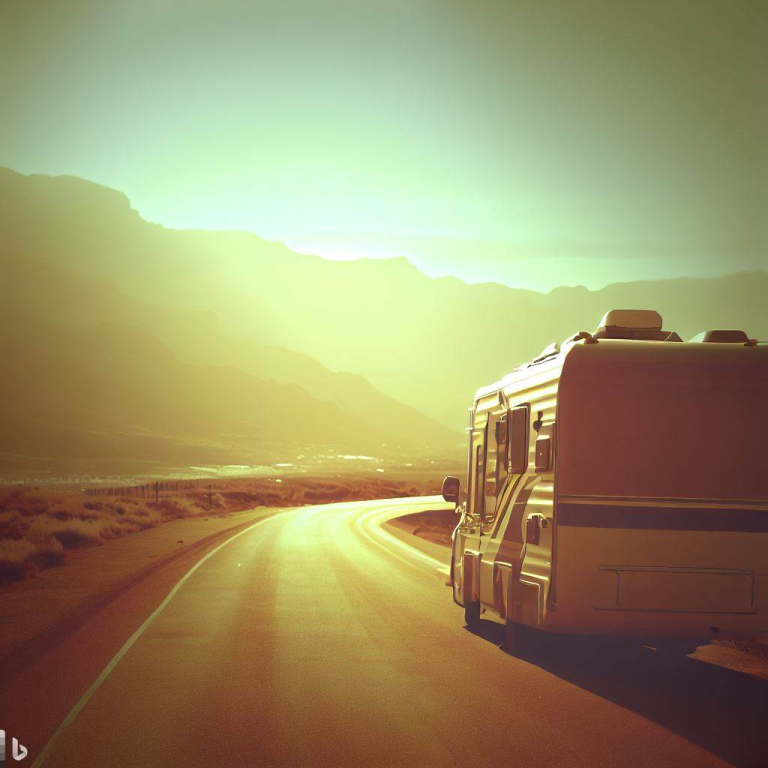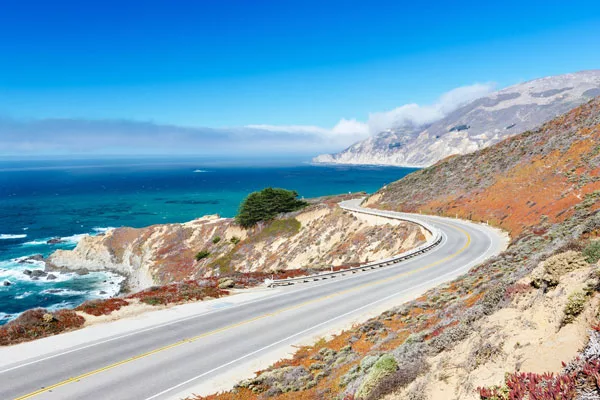Travel for Retirees: The Guide to Road Trip Safety, Traveling with Confidence and Fun | Vanika Retirement Travel Guide
- Introduction
- Planning Your Road Trip: Safety First!
- The Ultimate Road Trip Safety Checklist
- Road Trip Tips for a Smooth Ride
- Navigating Highways Safely
- Driving Safety Tips: Keeping Alert and Safe
- General Travel Safety Tips for Road Trippers
- Staying Safe on the Road: What’s New?
- Summer Driving: Beat the Heat and Stay Safe
- Conclusion
- Frequently Asked Questions
Introduction
When thinking about travel for retirees, picture this: you’ve retired, you have a trusty vehicle, and the open road beckons. It’s the perfect setup for an epic road trip, right? Many retirees love the freedom and adventure that comes with travel, making each journey a cherished experience.
But before you start channeling your inner Kerouac, remember that the best road trips are safe road trips. As people who have a wealth of experience and stories from their travels, retirees know the value of a well-prepared journey.
So, buckle up and let’s get into the nitty gritty of road trip safety, with a dash of humor and a whole lot of practical advice. There’s a special joy in exploring new destinations during retirement, making every trip an opportunity for discovery.
Planning Your Road Trip: Safety First!
Planning is the secret sauce of a successful road trip. It starts with making sure your vehicle is as ready for adventure as you are. You also need to check travel requirements and health considerations before you hit the road.
Check your car’s vital signs – the oil, tires, brakes, and batteries. Plan your route, including rest stops and scenic points along the way. Retirees may want to consider alternative routes or scenic detours for a more enjoyable experience.
Remember, a good plan is like a good companion – it makes the journey smoother and a lot more fun, so consider your comfort and safety as part of your planning.
The Ultimate Road Trip Safety Checklist
A road trip safety checklist is like a treasure map; it leads to a journey where the real treasure is coming back home with a bunch of happy memories. Your checklist should include everything you need for a full and safe trip:
- Vehicle Maintenance: Make sure everything, from headlights to windshield wipers, is in working order.
- Emergency Kit: Pack a kit with essentials like a first aid kit, flashlight, blankets and some basic tools.* Important Documents: Keep your driver’s license, registration, insurance info and roadside assistance details handy. I’ve used travel insurance before and can say it’s peace of mind and can be a lifesaver in an emergency.
Remember to factor in the cost of safety items and insurance when you’re making your full checklist.
Road Trip Tips for a Smooth Ride
Retirees know comfort is key, especially on long drives. Make sure your seat is adjusted to support your back and take regular breaks to stretch your legs. Choose a travel style that suits your comfort needs, whether you prefer leisurely scenic routes or a more adventurous pace.
Retirees should also look for hotels that offer senior discounts or amenities designed for comfort and convenience.
Stay hydrated (but not too hydrated – nobody likes frequent bathroom stops), and have healthy snacks within arm’s reach. The goal is to arrive at your destination with as much energy as when you started and discover new places along the way.
Navigating Highways Safely
Highway driving is a different beast but one you can tame with a few simple tips:
- Stay Alert: Keep your eyes on the road and hands on the wheel. Avoid distractions like fiddling with the radio or, heaven forbid, texting.
- Mind Your Speed: Stick to the speed limit. Speeding may get you there faster but safety always comes first.
- Know Your Route: Familiarize yourself with the route in advance so you’re not caught off guard by unexpected turns or exits. Research driving laws in different countries and cities as rules and signage can vary greatly.
- Be Aware of Driving on the Left: In some countries like Ireland and the UK you must drive on the left side of the road. If you’re used to right-hand driving this can be confusing so consider renting an automatic car or hiring a driver for added comfort and safety.
City driving can be a whole different ball game compared to highway driving so plan ahead for navigating through busy cities.
Driving Safety Tips: Keeping Alert and Safe
Borrowing from the corporate world here’s how to stay sharp behind the wheel. Long days on the road require extra attention to safety especially on multi-day trips or adventurous journeys.
- Take Regular Breaks: Every couple of hours pull over and take a break. When planning your day schedule these breaks to keep the blood flowing and the mind sharp.* Stay Hydrated: Dehydration can cause fatigue so keep water close – but not too close or you’ll be stopping every 30 minutes!
- Share the Driving: If you’re traveling with a partner, share the driving load. It’s safer and more fun when it’s a team effort and sharing makes the adventure more enjoyable.
General Road Trip Safety Tips
General travel safety is about being prepared for the unexpected:
- Check the Weather: Know what’s in store so you’re not caught in the rain.
Plan your stops to see interesting sights and landmarks along the way for a more enjoyable trip.
- Keep Emergency Contacts: Have a list of emergency contacts including family and roadside assistance.
- Stay Informed: Keep up to date with travel advisories and road closures along your route and check the latest travel news for important updates.
- Consider Guided Tours: Retirees may benefit from guided tours especially when visiting new destinations or exploring unknown areas.
Staying Safe on the Road: What’s New?
Nowadays, road trip safety has gone high-tech:
- Use Safety Apps: Use apps for real time traffic updates, weather forecasts and emergency services. All the information you need is on official travel apps. Click here for more info on our recommended safety resources.
- GPS Tracking: Use a GPS tracker with great features to keep family informed of your whereabouts – it’s like a “find my friends” for the road.
Summer Driving: Beat the Heat and Stay Safe
Summer road trips are a classic but come with their own challenges. Make summer driving part of your journey by preparing ahead and embracing the adventure.
- Avoid Overheating: Make sure your car’s cooling system is working properly and plan your next stop to give your car a break.
- Sun Protection: Use sunscreens and wear sunglasses. Just because you’re in a car doesn’t mean the sun can’t find you!
- Stay Cool: Keep the car interior cool and comfortable to avoid fatigue from heat.
End your trip and discover your new favorite summer spots.
Conclusion
In conclusion, a road trip in your retirement years is not just about the places you go but the journey you take.With preparation, awareness and a sense of humor, the road is your oyster.
Remember safety on a road trip is like the perfect travel companion – it makes the experience more enjoyable and worry free.
So go ahead, plot your course, pack your essentials and hit the open road with confidence and adventure. Here’s to the many miles and smiles ahead!
FAQs
What should I do to prepare my car for a long road trip?
Before you go make sure to do a thorough check on your vehicle. This includes tire pressure, oil levels, brakes, headlights and make sure your spare tire is in good condition. It’s also a good idea to have a professional mechanic give your car a once over.
How often should I take breaks during a road trip?
Take a break every two hours or 100 miles. Stretch your legs, get some fresh air and hydrate. Frequent breaks help keep you alert and reduce the risk of fatigue related accidents.
What are the essential items to include in a road trip safety kit?
Your road trip safety kit should include a first aid kit, flashlight, extra batteries, multi-tool, emergency flares or reflective triangles, portable phone charger, water and non-perishable snacks.
How can I stay alert and focused while driving long distances?
To stay alert make sure you get a good night’s sleep before the trip. Keep the vehicle interior cool, listen to engaging music or audiobooks and if possible share the driving with someone else.
Are there any specific safety tips for driving in unfamiliar areas?
When driving in unfamiliar areas always keep your GPS or map handy. Stay on well-traveled and well-lit roads especially at night and be aware of local traffic laws and speed limits.
What should I do if I encounter severe weather while on a road trip?
If you encounter severe weather like heavy rain or a storm slow down, keep your headlights on and maintain a safe distance from other vehicles. If the weather gets too intense find a safe place to pull over until the weather improves.
Is it safe to drive at night during a road trip?While driving at night can be safe it does come with increased risks like reduced visibility and driver fatigue. If you must drive at night take extra precautions, make sure your headlights and taillights are working and take more frequent breaks.
What dietary considerations should I keep in mind while on a road trip?
Opt for light meals and snacks that are low in sugar and high in protein to keep energy levels up. Avoid heavy meals that can cause drowsiness. Stay hydrated but balance your fluid intake to minimize excessive bathroom breaks.
How can I ensure my personal safety at rest stops?
At rest stops park in well lit areas, be aware of your surroundings and keep your valuables out of sight. Avoid stopping in isolated areas especially at night and always lock your doors when you leave your vehicle.
What are some tips for eco-friendly road tripping?
To make your road trip more eco-friendly pack reusable water bottles and food containers, carpool if possible, stick to the speed limit to conserve fuel and dispose of all waste properly.
Can I rely solely on GPS navigation or should I have a physical map as well?
While GPS is very useful it’s wise to have a physical map or printed directions as a backup in case of technical issues or areas with poor signal reception.
How do I handle roadside emergencies?
In case of a roadside emergency pull over safely, turn on your hazard lights and use emergency flares or triangles if needed. If you have roadside assistance call for help. Stay with your vehicle unless it’s not safe to do so.
Are there specific road trip considerations for pet owners?
If traveling with pets make sure they are secured in the vehicle, either in a crate or with a seatbelt harness. Bring enough food, water and supplies for them and plan for frequent stops to let them stretch and relieve themselves.
What should I know about towing a trailer or caravan?
When towing make sure your vehicle is capable of handling the extra load. Practice driving with the trailer or caravan before your trip and be aware of the increased stopping distance and wider turns required.
How can I maintain healthy eating habits on the road?
Plan and pack healthy snacks like fruits, nuts and yogurt. Choose restaurants that offer healthy options and try to maintain a regular eating schedule to avoid overeating or excessive snacking.




2 Comments
Comments are closed.